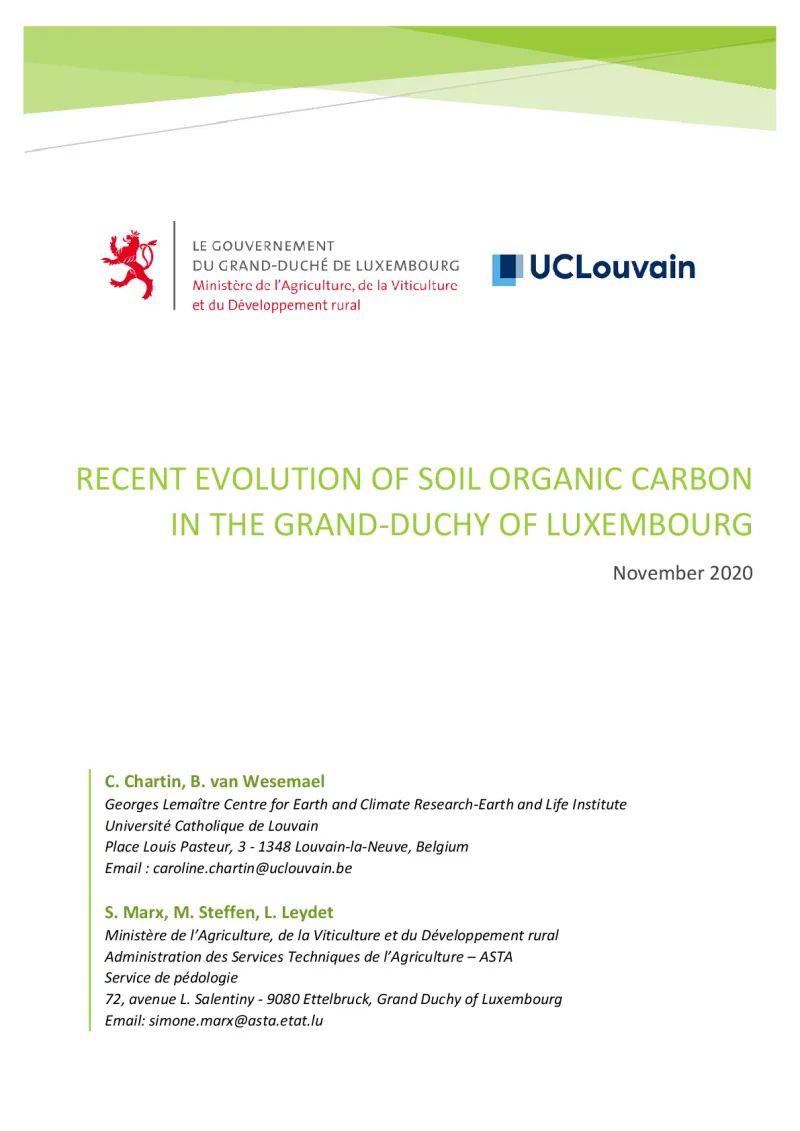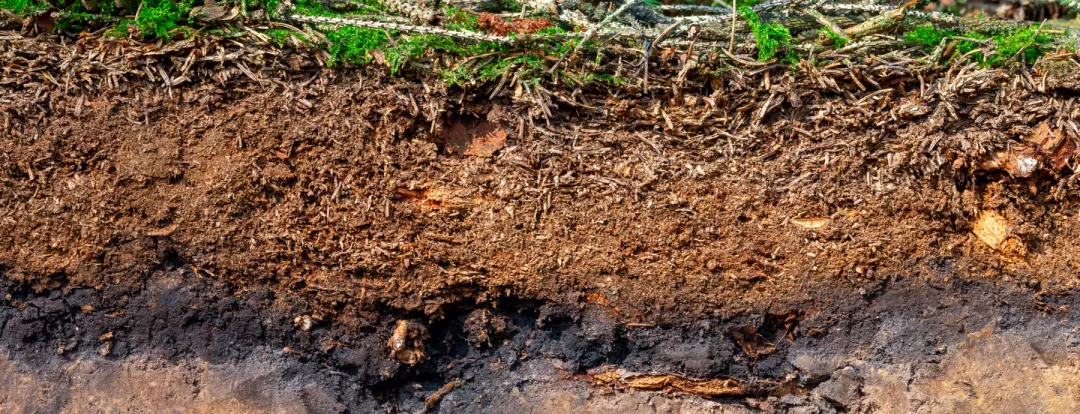Evolution of soil organic carbon in the Grand-Duchy of Luxembourg
Within the Rural Development Programme (RDP) for the 2014-2020 programming period, this report aims to improve knowledge of recent changes in soil organic matter, the current regional soil organic carbon (SOC) base and the potential effects of management practices on future SOC trends.
- Luxembourg
- 2014-2022
- Environmental impacts


This study, published in 2020, is based on SOC data from 2012 to 2019 and aims to assess how the SOC content has evolved in general during this period and whether the RDP could have affected soil quality.
In the context of the RDP for the 2014-2020 period, the European Commission asked Member States to monitor the effects of environmentally friendly farming techniques. This study examines the effects of three Good Agricultural Practices (GAP) applied under cropland – cover crops (CC), reduced tillage (RT), and temporary grassland (TG) – on the evolution of topsoil SOC content in the short term (since 2012).
This study aims to explore all the SOC data available in the Grand-Duchy of Luxembourg (GDL) to improve knowledge of recent changes in soil organic matter, the current regional SOC base and the potential effects of management practices on future SOC trends.
The methodological approach adopted is as follows:
- To analyse the spatial variability of soil organic carbon (SOC) in croplands, grasslands and vineyards all over the GDL using observations from the ASTA database for the 2012-2019 period;
- To study the recent evolution of SOC in these three land uses;
- To analyse the impact of three GAPs on SOC content;
- To study the relative importance of environmental covariates against management practices (GAP) on SOC variability in cropland.
The data sources used include the ASTA-SOC-LU database (which compiles all the results of routine analyses carried out for farmers in the GDL). The study is also based on the Land Parcel Information System (LPIS), the spatial register of the Integrated Administration and Control System (IACS), which identifies and quantifies agricultural land in order to target CAP payments.
Most of the study's limitations relate to the lack of data to prove the hypotheses or an insufficient number of observations. In fact, for several of the hypotheses formulated in the study, additional data and research are needed to confirm them (e.g. positive impact of the recent rise in temperature on carbon mineralisation, increased productivity of wetland soils in drier and warmer conditions, etc.).
With regard to changes in SOC in cropland, grassland and vineyards, the assessment concludes that: (1) in cultivated land, SOC increases significantly for the 'Buntsandstein', 'Luxembourg Sandstone', 'Silty Sandstone Deposits' and 'Keuper Heavy Clay' soil associations and decreases significantly for 'Oesling' soils; (2) in grasslands, only soils from the 'Other' soil association (mainly 'Alluvium and Colluvium') show a significant difference (an increase) in SOC content; (3) in vineyards, SOC content for soils from the 'Muschelkalk Dolomites' and 'Keuper Heavy Clay' decreases.
With regard to the analysis of the impact of three GAPs, the assessment highlights that: (1) fields subjected to GAP (undifferentiated) show a higher SOC content than control fields (for eight of the ten soil associations); (2) fields under temporary grassland mainly have a higher SOC content than control fields, with a significant positive difference detected in 'Oesling', 'Luxembourg Sandstone' and 'Others' (mainly 'Alluvium and Colluvium'); (3) fields managed with reduced tillage show a higher SOC content, but no significant difference is detected; (4) lots subjected to CC show only negative or equivalent SOC levels to control fields.
Author(s)
Catholic University of Louvain